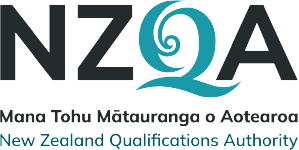Purpose
Achievement Criteria
Explanatory Note 1
This Achievement Standard is derived from The New Zealand Curriculum, Learning Media, Ministry of Education, 2007, and relates to the objectives of the Big Ideas at Level 7 of the Te Ao Haka Learning Matrix at Curriculum Levels 6, 7 and 8.
Explanatory Note 2
Respond to a Te Ao Haka performance involves:
- describing the narrative of the performance
- recording a personal response as an audience member.
Reflect on a Te Ao Haka performance involves:
- considering how the performance utilised key features to communicate the narrative
- connecting the personal response as an audience member to elements of the performance.
Interpret a Te Ao Haka performance involves:
- making connections between the response as an audience member and personal perspective and experiences.
Explanatory Note 3
Key features are discrete, distinctive attributes that appear in Te Ao Haka across disciplines, although they may not appear in all disciplines all the time.
Examples of key features include:
- wiri
- rere (of poi)
- takahi
- stance
- reo/hāngū
- pūkana
- whakakai
- tūwaewae
- mahinga rākau
- formations.
Explanatory Note 4
Elements are aspects of a composition or performance that are present in but not unique to Te Ao Haka.
Examples of elements include:
- tempo
- dynamics
- characterisation
- voice
- point of view.
A more extensive list of elements is available within the Subject Glossary for Te Ao Haka https://ncea.education.govt.nz/arts/te-ao-haka?view=subject-glossary.
External Assessment Specifications
The External Assessment Specifications are published by NZQA and can be found on their website using this link:
NZQA Te Ao Haka
Unpacking the Standard
Students will explore their own role in the promotion and preservation of te ao Māori. Students will explore the creativity and artistry of a Te Ao Haka performance as an audience member. They will also give a point of view on a performance by analysing the features, elements, and aspects of it.
Level 2
Students at Level 2 should be experimenting and innovating. This is reflected in the internals' credit values being higher than those of the externals to provide room for creativity and a safe space to develop through taking creative risks. Six credits have been allocated to both internal Achievement Standards for this reason, with the stated aim of bringing out the best in all ākonga in a 'safe' – or familiar – space.
Literacy and Numeracy Requirements
From 2024 onwards, this achievement standard can no longer be used to meet the NCEA Co-requisite requirements.
Full information on the co-requisite for 2024 and 2025: Standards approved for NCEA co-requisite for 2024 and 2025.
Students will explore their own role in the promotion and preservation of te ao Māori. Students will explore the creativity and artistry of a Te Ao Haka performance as an audience member. They will also give a point of view on a performance by analysing the features, elements, and aspects of it.
Level 2
Students at Level 2 should be experimenting and innovating. This is reflected in the internals' credit values being higher than those of the externals to provide room for creativity and a safe space to develop through taking creative risks. Six credits have been allocated to both internal Achievement Standards for this reason, with the stated aim of bringing out the best in all ākonga in a 'safe' – or familiar – space.
Literacy and Numeracy Requirements
From 2024 onwards, this achievement standard can no longer be used to meet the NCEA Co-requisite requirements.
Full information on the co-requisite for 2024 and 2025: Standards approved for NCEA co-requisite for 2024 and 2025.

